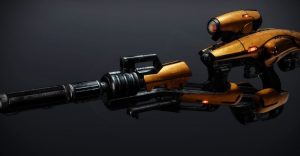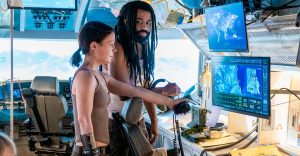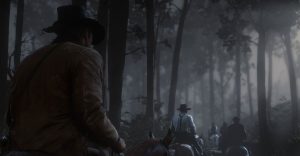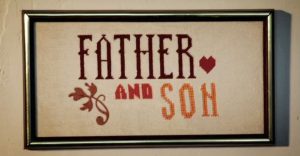Solo: A Star Wars Story Reshoots: What’s Lord & Miller And What’s Ron Howard?
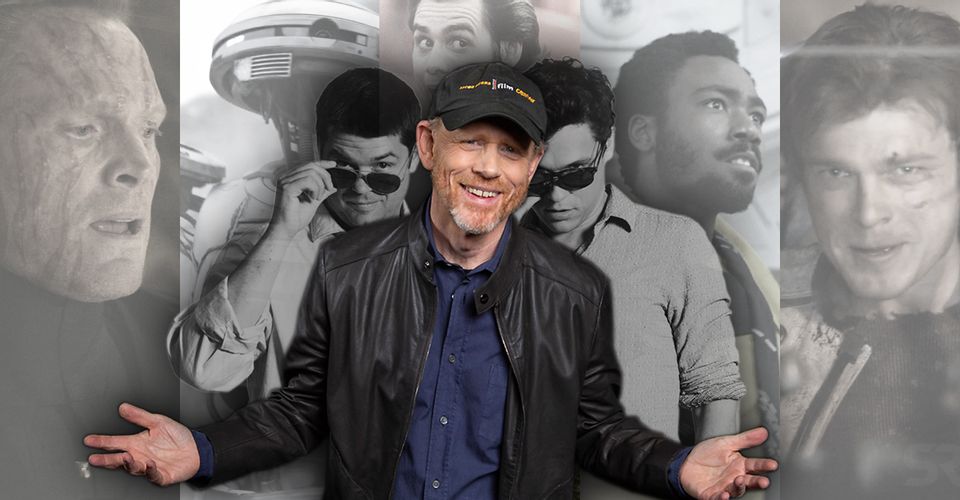
Solo: A Star Wars Story may reveal a lot about the backstory of everybody’s favorite galactic smuggler, but one big mystery remains as the credits roll: who shot what? If you go by the credits, then Solo is directed by Ron Howard, with Phil Lord & Christopher Miller getting an Executive Producer credit. However, we know that’s not what really happened.
Up until June 2017, Lord & Miller were directors of the project. They were fired by Lucasfilm over 80% of the way through filming and replaced a month later by Howard, who restarted production in July and continued through to October. The specifics of why Lord & Miller were fired has been the subject of much, contradictory reporting – the general understanding is they both weren’t at home on either a production of this scale and didn’t grasp the requirements of Star Wars film, and so were removed before they could claim Director’s Cut per DGA rulings – but what’s been more important since Howard steadied the ship is how noticeable these reshoots would be.
Related: Solo: A Star Wars Story’s Director Problems – What Really Happened
Reshoots have become a very dirty word in recent film discussions. While pickups are a natural part of the production process on studio films and typically done to fine-tune issues with an assembly cut or fill unexpected gaps, there’s recently been greater adjustments. On Justice League, the mid-post departure of Zack Snyder and Joss Whedon-directed reshoots led to a Frankensteined superhero movie, while Suicide Squad not only underwent substantial reshoots but was subjected to multiple edits at Warner Bros. behest. Lucasfilm isn’t a stranger to reshoots or director changes either, with the third-act of Gareth Edwards’ Rogue One (as well as several running elements) retooled by Tony Gilroy.
The story is more complicated with Solo thanks to Howard not only taking over when his predecessors were 80% of the way through and extending production, but with the estimates of the amount of the finished film he shot going as high as 70%. This means that the lions-share of Solo: A Star Wars Story was shot by Ron Howard, straight-up – and he wasn’t changing story as much as tone. Regardless, that still leaves 30% of Lord & Miller’s version out there. What was added, what was redone, and what remains?
- This Page: Changes Ron Howard Made To Solo: A Star Wars Story
- Page 2: What Ron Howard Reshot Of Solo: A Star Wars Story
- Page 3: Which Bits Of Solo Were Directed By Lord & Miller?
Everything Dryden Vos Is A Howard Change

When Lord & Miller were first fired, the commonly cited reason was their deviation from the script or otherwise focus on improvisation. Since then, further problems have been reported, but throughout the screenplay – and position of writers Lawrence and Jon Kasdan as Solo: A Star Wars Story‘s masterminds – has remained. When Howard came on, the line has been that his primary focus was bringing the tone more in-line with the Star Wars franchise. Despite that, we know there were some key changes Howard made to the original plan which allow us to see key elements he influenced.
The most public change Howard made to Solo was the recasting of villain Dryden Vos. Originally Michael K. Williams was in the role as a human-animal hybrid, but due to scheduling conflicts couldn’t return to shoot any scenes and so was recast with Paul Bettany as a marked human. This immediately means that any scene featuring Bettany was shot entirely by Howard, which likely extends to everything inside his yacht. Leaked set photos showed the Lord & Miller set for Dryden’s base, which has several key divergences from Howard’s: there are different museum trinkets (including a stuffed ewok) and an in-floor elevator. This would indicate a set re-do, possibly due to a rebuild, which in turn indicates the majority (if not all) of these scenes here was Howard. It’s further possible – but we will stress speculation – that the reason Vos is based in a moving castle is to reduce the amount of sets (and limit Bettany to one location) in reshoots.
Related: Solo Reshoots May Have Removed Canon Connection
This would further indicate that the Darth Maul cameo was also Howard, given the set, although that’s hard to know as Ray Park’s hologram appearance was presumably a composite. What is known is that the shocking return was part of the very original plan for Solo, with Jon Kasdan wanting it a part of the story from early on, meaning Lord & Miller may have had a version.
Howard Added Several New Actors And Ideas To Solo

One aspect definitively added by Ron Howard is his brother and good luck charm, Clint. He plays the “mean man” fighting droids for money who falls afoul of L3-37 when Han and co. first meet Lando. This obviously means the shots immediately featuring Clint are Howard, and it can be reasoned that the surrounding sequence in the same location would be too, although it’s unclear what else was altered beyond casting.
Another actor who only came on board after the change is Jon Favreau, who provided the voice for Rio Durant. The character may have previously existed in some form as part of Lord & Miller’s version, but at the very least the vocal performance is new (and we’ll come back to bigger suspect changes later).
From interviews, it’s also confirmed that George Lucas had an influence on the scene in Lando’s closet, with him suggesting Han fling the cloak aside rather than rehanging it, indicating an addition – and indicating Howard’s focus on the character moments.
Related: How Solo Explains The Revenge of the Sith Falcon Easter Egg Problem
Finally, one late addition to Solo is a shot from Rogue One‘s Celebration teaser for the introduction of Han and Lando’s final Sabacc game, which is likely a result of the production issues. While not definite, this may indicate a location change to broaden Solo’s scope, and thus a Howard-added planet.
Page 2: What Ron Howard Reshot Of Solo: A Star Wars Story
- Star Wars 9 / Star Wars: The Rise of Skywalker (2019)Release date: Dec 20, 2019
1
2
3
About The Author











